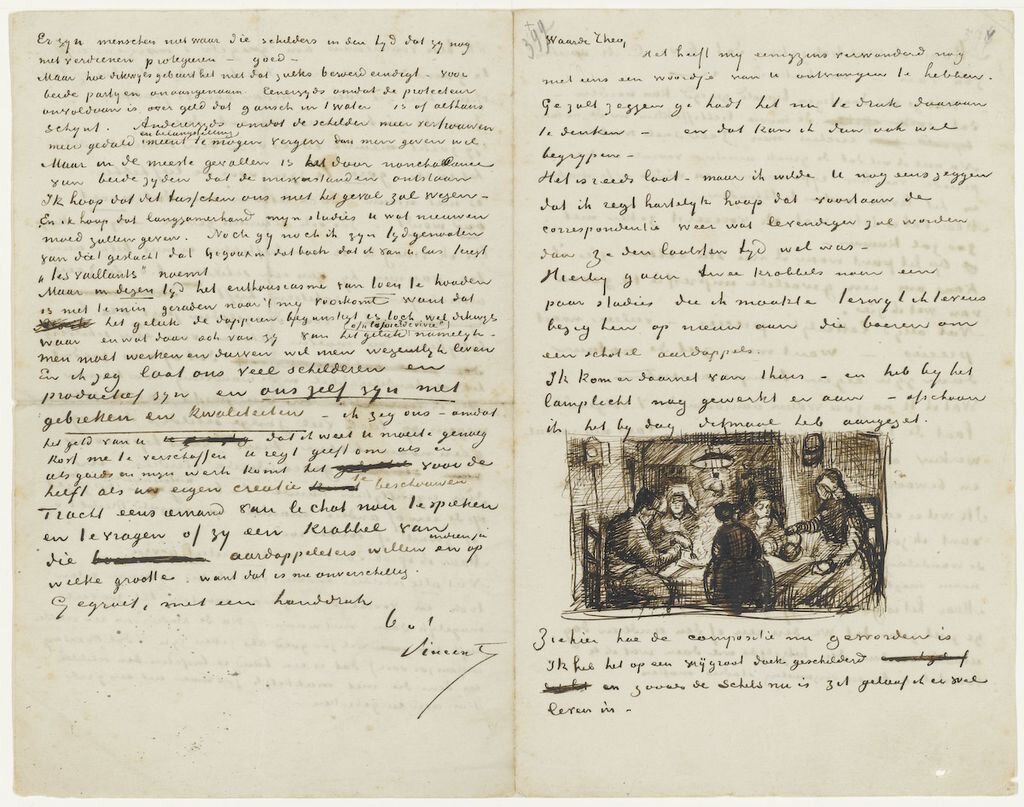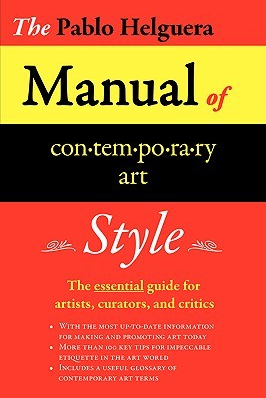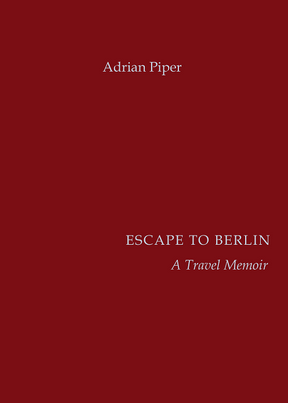An artist’s creative process is generally an implicit one. Since visual artists are wrapped up in the aesthetics and framework of a piece, it becomes a far more daunting task for them to put their tacit artistic knowledge and skills into words—especially language that a layperson can absorb. However, as I mentioned in How I Learned to Stop Artspeak and Love the Editorial Process, the quality of an artist’s writing can have a significant impact on getting exhibition opportunities, as well as promoting their work to large and diverse audiences.
If you are looking for some inspiration, there are a lot of compelling examples of good writing from artists throughout art history. Below are descriptions of a few artists who double as literary luminaries.
Vincent van Gogh
Vincent van Gogh, letter to Theo van Gogh, April 1885. Image in the public domain, via Wikimedia Commons.
We can all close our eyes and picture a Vincent van Gogh painting, but did you know that the postimpressionist also made quite an impression with his letters? Van Gogh was a prolific wordsmith who wrote frequently to his family, friends, and acquaintances who were some of the leading artists of his time.
Van Gogh’s letters provide an alternative window to his artwork. While his paintings suggest strong psychological responses to the natural world, his writing critically elaborates upon his emotional and creative impulses. The anthology The Letters of Vincent van Gogh contains over 800 letters that Van Gogh wrote, mostly to his brother Theo (an art dealer), sister Wilhelmina (Wil), and artists, such as Paul Gauguin.
From his letters, we glean unique insights into the art scene during the nineteenth century. In an April 1885 letter written to Theo, he mentions his seminal painting, The Potato Eaters, and the intimacy of sharing studies for artworks: “Not all painters make a lot of studies—but many do, and the young ones in particular have to do it as much as possible, don’t they? Anyone who owns a painter’s studies can be as good as certain (at least so it seems to me) that there’s a bond between the painter and him that can’t easily be broken just on a whim.”
Pablo Helguera
Cover of Pablo Helguera’s The Pablo Helguera Manual of Contemporary Art Style (Jorge Pinto Books, 2007). ISBN:0-9790766-0-9
Pablo Helguera is a contemporary artist who employs storytelling and other forms of communication in order to bring diverse cultural groups together.
A lot of his work involves the perseverance and expansion of written and oral language. He has travelled throughout North and South America to document speakers of nearly extinct languages and opened a bookstore to make personal libraries (sourced from his own collection, as well as through donations) and books in Spanish language more accessible to the public (noting that there has been a decline in Spanish-language books despite growing Hispanic populations).
As an author, he has written an array of books with topics that range from progressive education (Education for Socially Engaged Art: A Materials and Techniques Handbook) to art criticism. Helguera’s writing is substantially inspired by his experiences wearing many hats (he is an artist, educator, and performer) within the art world. His 2007 book, The Pablo Helguera Manual of Style, is a parodistic take on the many facets of the contemporary art scene. We are all anxiously awaiting his forthcoming book with Tom Finkelpearl about art museums!
Adrian Piper
Cover of Adrian Piper’s Escape to Berlin: A Travel Memoir (APRA Foundation, 2018). ISBN #978-3-9813763-4-0
Piper is as much of an influential philosopher as she is a leading conceptual artist. In addition to an associate’s degree in visual art from the School of the Visual Arts, Piper earned her bachelor’s in philosophy from the City College of New York and both her master’s and doctorate in philosophy at Harvard University. Her writings and musings on both subjects reflect her academic and experiential wisdom.
Piper is the author of several volumes of essays that give us insight into her artwork and its connections to Kantian ethics, metaphysical subjects, yogic practices, and intersectionality. Piper beautifully describes her life’s journey to becoming both an artist and philosopher in her memoir, Escape to Berlin.
The written word is also prominently featured in one of her most poignant artworks, My Calling Card #1. On a small piece of brown paper, Piper assertively addresses the casual racism and implicit bias within affluent and predominantly white social circles, stating:
Dear Friend, I am Black. I am sure you did not realize this when you made/laughed at/agreed with that racist remark. I am sure you did not realize this when you made/laughed at/agreed with that racist remark. In the past, I have attempted to alert white people to my racial identity in advance. Unfortunately, this invariably causes them to react to me as pushy, manipulative, or socially inappropriate. Therefore, my policy is to assume that white people do not make these remarks, even when they believe there are no black people present, and to distribute the card when they do.
During a performative period from 1986 to 1990, Piper handed these cards out to attendees of dinner parties whom she witnessed making racist remarks.
Your name here
As an artist, honing your literary skills not only opens doors to career opportunities, but it can also be a rewarding way to engage new audiences from fields outside of the fine arts. This is noted through the aforementioned artists who double as effective and impactful writers. The next time you are looking for a good book to take into the studio (or the beach, park, or wherever you do your best reading), consider something that was written by a fellow artist. And why not take a few moments out of your day to jot down some sentences about what inspires you to create? Perhaps we will be reading your artful writing soon enough.



